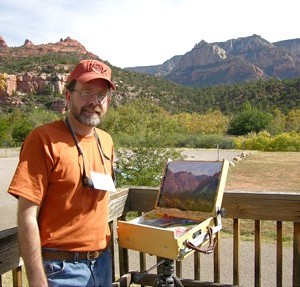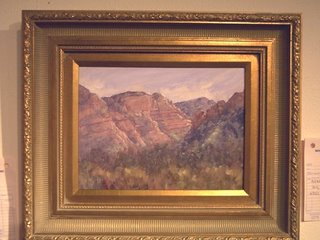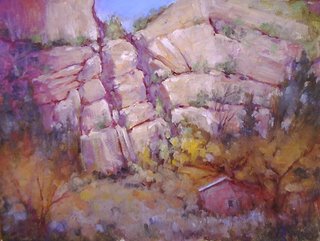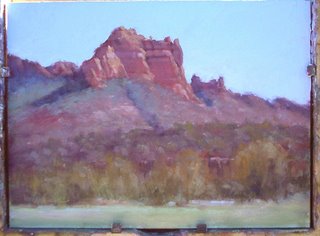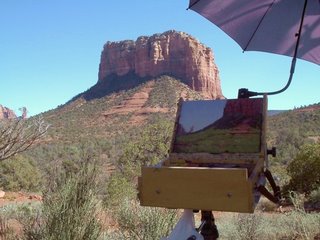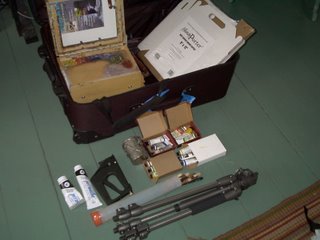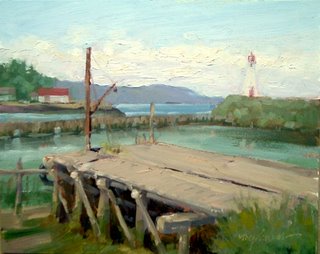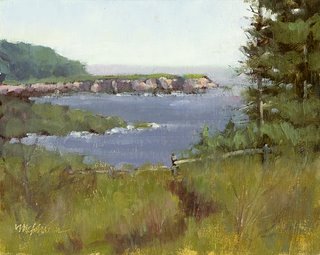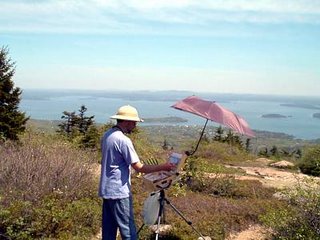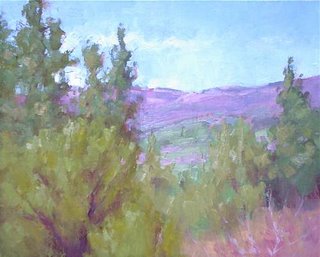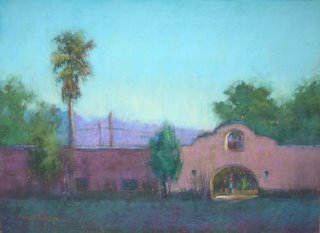
I taught a lot of workshops last summer, and I ran into all kinds of students. Some had purchased their first paints -- ever -- just for my workshop. They didn't even know what colors to buy, and they were glad to have me help choose. Others, Sunday painters who find time to paint only when the family is out shopping, came to me so they could get better, fast. Others had been painting professionally for years and wanted a break from what they usually do and stretch their horizons.
Among all these groups were many who knew little or nothing about painting outdoors, but who wanted to learn.
What possesses a person to fancy himself an outdoor painter? I always thought of myself as a camper, but after a few years of flooded-out tents, mosquitoes trapped in my sleeping bag and camp stoves that failed me a hundred miles away from the nearest restaurant, I learned something about myself. I'm not a camper. (I don't care much for hotels, either, but that's another story.)
In a similar way, some artists aren't outdoor painters. It's not just the paint that gets smeared on the driver's seat of the car, or the mosquitoes and the blackflies, or the wind and intermittent drizzle. Sure, these things contribute, but I've always found that once I'm "in the zone," as we painters like to say, they are inconsequential. More important is your approach to painting.
It all has to do with time and focus.
An experienced outdoor painter learns quickly to eliminate the 359 degrees of the panoramic landscape and focus on the 1 degree in front of him. He learns to establish color and value quickly. If he's no good at judging color accurately, then he makes a choice about what colors to use and sticks with it, no matter what.
I like to think of my painting as a "performance piece." I do my best to exercise my skill, but like a concert pianist, I have no opportunity for revision. Time, and the accompanying shifting of light and shadow, of weather and tide, does not permit it.
Some artists aren't performers. Making judgments rapidly and sticking by them makes them uncomfortable to the point of frustration. On the other hand, there's nothing more pleasurable to them than the more contemplative practice of laying down a stroke, considering it, and if it doesn't fit, wiping it out. They are more like the studio musician who enjoys the freedom to try different chords, different tempos, to see what's best before recording.
There's nothing wrong at all with one temperament or the other.
I encourage my students who discover that they don't have the temperament for painting outdoors to consider the week with me all part of Continuing Education. I want them to go back to their studios, enriched from the experience but also satisfied in the knowledge that how they do things is just another way of making perfectly good art.
 One great thing about my second-floor studio is that I have several windows with interesting views of different subjects. For an artist who paints primarily outdoors, winter weather can be an obstacle, and having windows offers a way to paint without having to be in the wind. (After last night's snow and with today's wind, the windchill is 14 degrees.)
One great thing about my second-floor studio is that I have several windows with interesting views of different subjects. For an artist who paints primarily outdoors, winter weather can be an obstacle, and having windows offers a way to paint without having to be in the wind. (After last night's snow and with today's wind, the windchill is 14 degrees.) 






